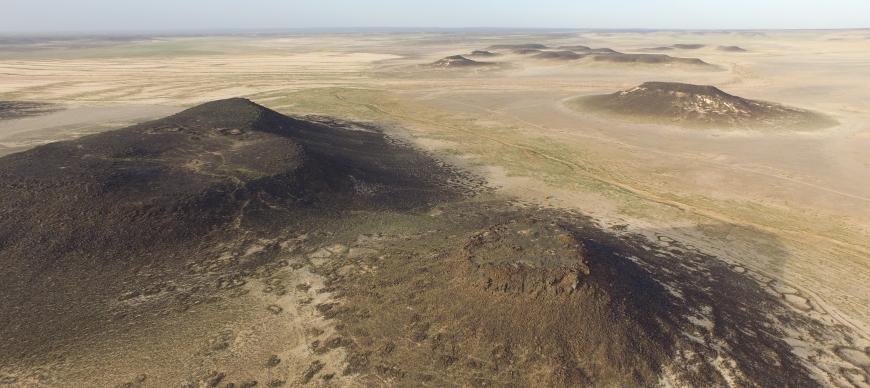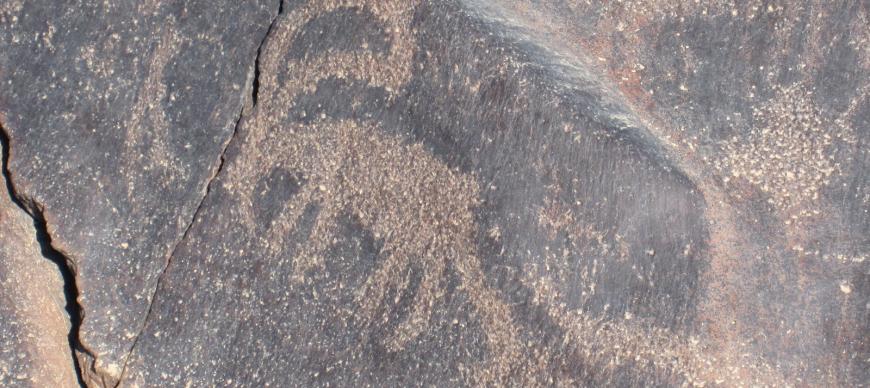The Eastern Badia Archaeological Project [EBAP] focuses on an east-west transect across the southern part of the eastern badia, in the Black Desert of Jordan. Unexplored archaeologically, our broader goal is to record and study the architecture, artifacts, and petroglyphs, integrating that information with biological and paleoclimatic data in order to understand the human occupation and use of the region. We are particularly interested in evidence suggesting that the emergence of significant occupation in the Black Desert during later prehistory (Late Neolithic to Early Bronze, or 6,500 - 3,000 BC) was the consequence of changing environmental conditions in this area, and in regions to the west.
Our survey and excavations have concentrated on two areas, Wadi al-Qattafi and Wisad Pools, located on the margins of the harra, the area strewn with ancient basalt flows. Wadi al-Qattafi is a major north-south drainage approximately 60 kilometers east of Azraq, with more than 20 basalt capped mesas that rise 40-60 meters above the wadi. More than 600 structures have been identified among these prominences, both along the flanks and atop the mesas. Wisad Pools, about 60 kilometers further to the east, includes hundreds of structures and over 400 petroglyphs concentrated around a series of small pools. Our studies indicate that both areas attest to a striking presence of communities that invested time and energy into building sturdy structures of the heavy basalt. To date, our evidence highlights that much of this occupation dates to extended construction, occupation, and re-building during the Late Neolithic, although some later occupation during the Late Bronze or Early Iron Age is also documented.



